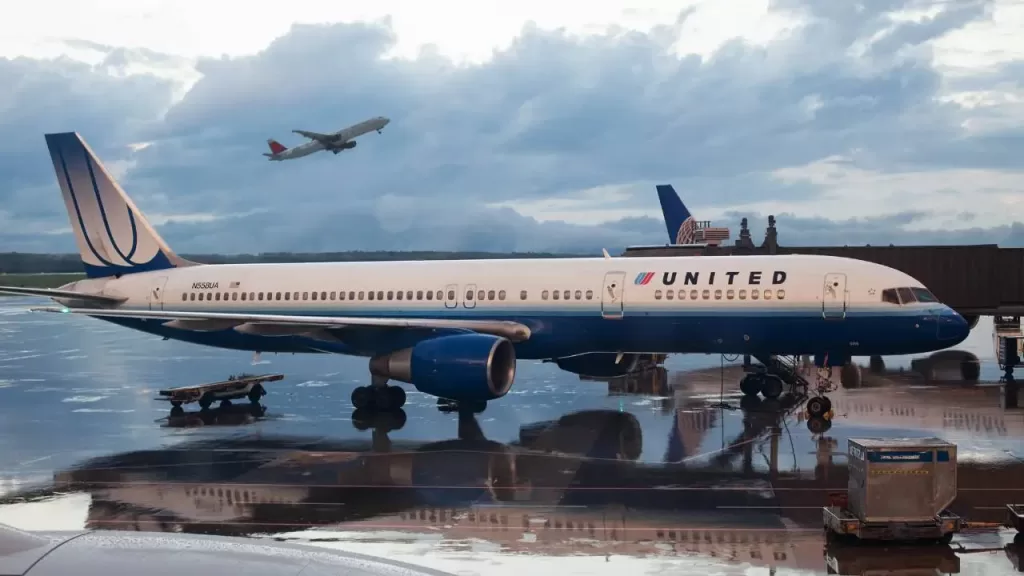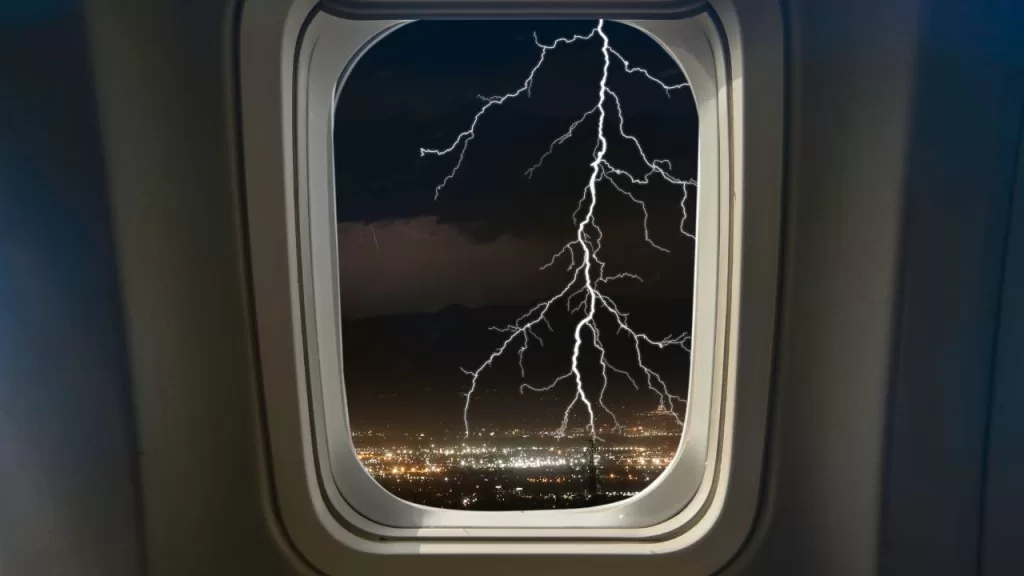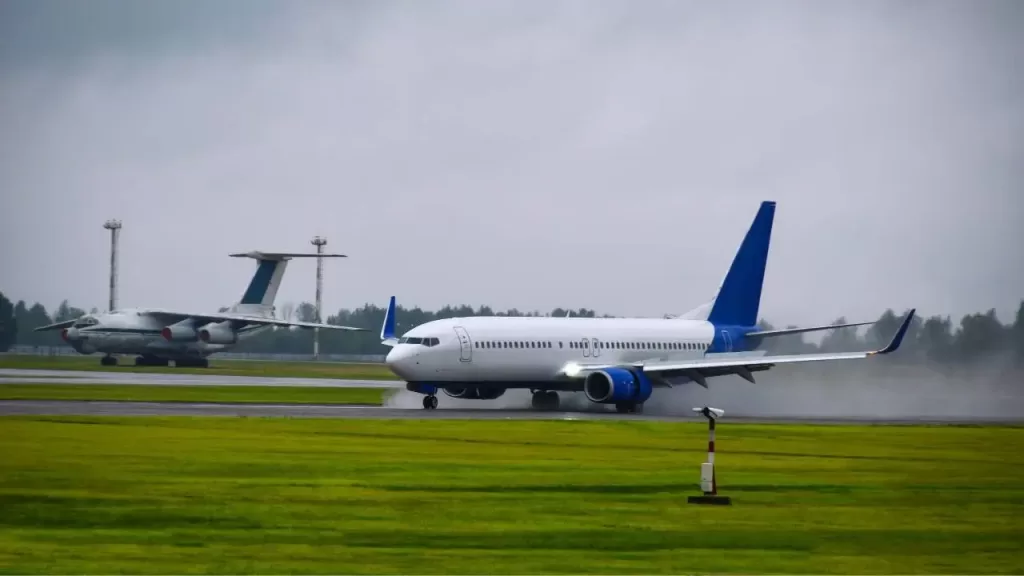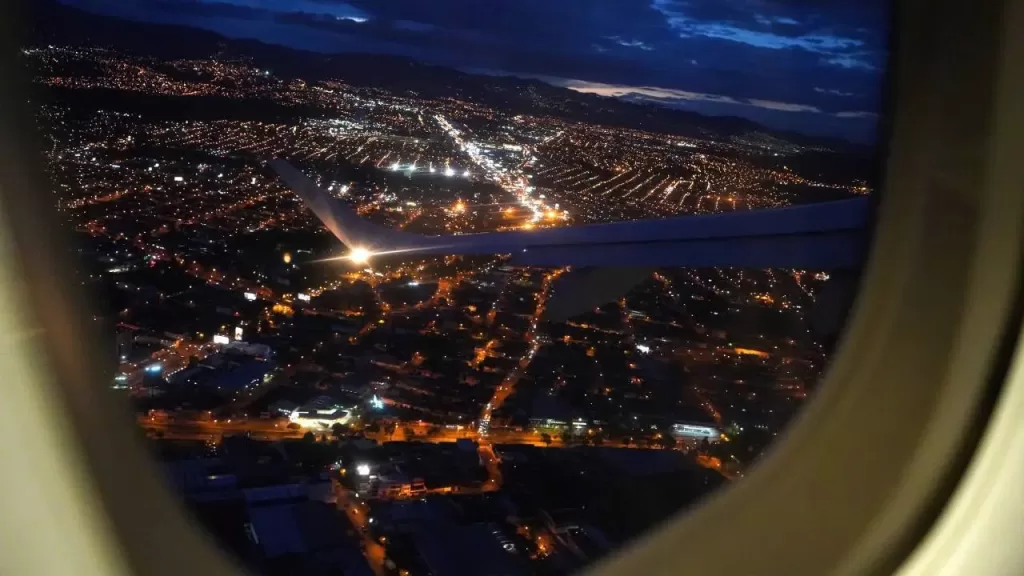
Can A Plane Take Off In The Rain?
Your Complete Guide To Flying In Bad Weather To Italy, Europe Or Anywhere In The World
- Nathan Heinrich
- Rome, Italy
When it comes to aviation, weather conditions play a critical role in determining the safety and feasibility of a flight.
Rain, with its potential to create reduced visibility, slick runways, and gusty winds, raises the question: Can a plane take off in the rain?
The very simple answer is “Yes” – but there are some exceptions.
Most types of aircraft are outfitted with the correct instruments and equipment to take off in the rain from large to small airports.
But one of the most important elements of the equation is the qualifications of the pilot.
Taking off during a storm with zero visibility requires certain specific instrument ratings.
Low visibility procedures and careful adherence to IFR (instrument flight rules) allow a pilot to safely take off in rainy weather.
In This Article:
The Complexities Of Flying In The Rain
In this article, we will delve into the complexities of operating aircraft in adverse weather conditions, exploring the challenges faced by pilots and the safety measures implemented by the aviation industry.
From heavy rain and strong winds to freezing temperatures and low clouds, we will examine how modern airplanes, both commercial and private, are designed and equipped to handle different weather conditions.
We will navigate the skies and unravel the secrets behind safe and successful takeoffs in inclement weather.

Wet Runways and Poor Visibility
One of the primary concerns when it comes to taking off in the rain is the condition of the runway.
Wet runways can reduce the friction between the aircraft’s tires and the ground, potentially affecting its ability to accelerate and lift off safely.
However, modern aircraft are designed with advanced braking systems and specialized tires that provide enhanced traction even on wet surfaces.
Additionally, runways are equipped with grooves and drainage systems to minimize water accumulation and improve runway conditions during rainy weather.
Another challenge presented by rain is reduced visibility.
Poor visibility can make it difficult for pilots to see runway markings, other aircraft, or obstacles in their flight path.
However, commercial planes are equipped with sophisticated weather radar systems that can detect rain and other precipitation in real-time, providing pilots with valuable information to adjust their flight plans accordingly.
Additionally, advanced navigation systems and instrument landing procedures allow pilots to rely on precise instruments for guidance during takeoff, even in conditions of limited visibility.

Strong Winds
Strong winds can pose a significant challenge to aircraft during takeoff, especially if they are gusty or crosswinds.
Crosswinds, in particular, can create a sideways force on the aircraft, making it more difficult to maintain directional control during the critical moments of lift-off.
However, commercial aircraft are designed to withstand and counteract these forces through a combination of aerodynamic design, control surfaces, and pilot skills.
Flight crews undergo rigorous training to handle crosswind takeoffs, employing techniques such as using appropriate rudder inputs to align the aircraft with the runway and ensuring a smooth transition into the climb phase.
Wind Shear
Wind shear is another weather phenomenon that pilots must be prepared to encounter.
Wind shear refers to a sudden change in wind direction or speed, occurring at low altitudes during thunderstorms or near terrain features.
It can create a rapid shift in airspeed and affect the performance of the aircraft.
To mitigate the risks associated with wind shear, modern airplanes are equipped with wind shear detection systems that provide advanced warnings to pilots.
These systems analyze changes in airspeed, altitude, and other flight parameters, alerting the crew to potential wind shear conditions.
Pilots can then adjust their flight profiles or even abort takeoff if necessary to ensure the safety of the aircraft and its occupants.

Freezing Temperatures and Winter Weather
Winter weather brings its own set of challenges for aircraft operations.
Freezing temperatures can lead to the formation of ice on the aircraft’s wings, which can disrupt smooth airflow and compromise lift. To combat this, aircraft undergo thorough de-icing procedures before takeoff.
De-icing fluids are applied to the wings and other critical surfaces to remove any ice or frost and prevent further accumulation during flight.
Pilots must adhere to strict guidelines regarding holdover times, which specify the maximum time between de-icing and takeoff to ensure the effectiveness of the treatment.
Winter storms, including snowstorms and blizzards, can create adverse conditions for takeoff and landing.
Runway conditions must be carefully assessed to ensure safe operations, as snow and ice can reduce the braking efficiency of aircraft.
Runway plows and de-icing equipment are utilized to clear the runway and maintain safe friction levels.
Additionally, pilots receive specialized training in winter weather operations, including techniques for landing on snowy or icy runways.

The Role of Commercial Planes
Commercial planes, designed to carry a large number of passengers, are equipped to handle various weather conditions.
They undergo rigorous testing and certification processes to ensure their performance and safety.
The ability of commercial aircraft to take off and land in adverse weather relies on factors such as wind shear, freezing temperatures, low clouds, and poor visibility.
Flight crews, consisting of highly trained pilots and cabin attendants, are well-versed in the procedures and protocols for operating in inclement weather.
Their expertise and experience contribute to safe landings even under challenging circumstances.
However, it’s essential to note that severe storms and extreme weather conditions may result in flight cancellations or diversions to ensure passenger safety.

Private Jets and Small Planes
Private pilots who operate smaller aircraft face additional considerations in inclement weather.
While modern technology and advanced avionics have improved the safety of smaller planes, they still have limitations compared to commercial airliners.
Private jets may have lower capabilities in terms of handling heavy winds and severe turbulence.
In cases of inclement weather, private pilots often rely on ground staff and air traffic controllers for updated weather information and guidance.
They may choose to delay or alter their flights, opting for a safer time window or route.
The decision to fly in adverse weather ultimately lies with the pilot, who must assess the risk based on the plane’s ability and the prevailing conditions.

Flight Crew and Air Traffic Controllers
The successful takeoff in adverse weather conditions relies not only on the capabilities of the aircraft but also on the expertise of the flight crew and air traffic controllers.
Flight crews undergo extensive training and recurrent simulations to ensure they are prepared to handle various weather scenarios.
They are trained in decision-making processes and have a thorough understanding of the aircraft’s performance capabilities under different weather conditions.
Air traffic controllers play a crucial role in managing air traffic during adverse weather.
They continuously monitor weather radar and provide real-time updates to pilots, guiding them through areas of heavy rain or severe storms.
Controllers coordinate arrivals and departures, adjusting flight paths and sequencing aircraft to minimize the impact of adverse weather on operations.
Their expertise and effective communication are vital in ensuring safe and efficient air traffic flow.

Safety and Flight Planning
Safety is the utmost priority in aviation, especially when operating in adverse weather conditions.
Airlines have established comprehensive safety protocols and guidelines to address different weather scenarios.
Flight planning plays a crucial role in assessing the risks associated with the weather and determining the best course of action for a safe takeoff.
Pilots review weather reports and forecasts, taking into account factors such as thunderstorms, severe turbulence, or low visibility.
Based on this information, they adjust their flight plans, select appropriate altitudes and routes, and make informed decisions to ensure the flight’s and its passengers’ safety.
Flight delays and cancellations are not uncommon during severe weather events.
While they can be frustrating for passengers, these decisions are made with safety as the primary concern.
Airline flight operations staff work diligently to accommodate affected passengers, providing timely information, rebooking options, and support during these situations.

A Personal Story About A Recent Flight To Rome, Italy - On A Very Rainy Night
Several months ago, I was on my way to the Atlanta airport in one of the worst rain storms I have ever experienced.
At one point I had to pull my car over because I couldn’t even see the road.
As I got closer to the airport, I kept checking to see if my flight was canceled or delayed.
“There’s no way they can fly out in this wild storm”, I thought to myself.
As I parked and made my way into the terminal to check in, the rain was still coming down hard.
I stopped at the large monitors to check on the airline flight cancellations and delays.
There were no cancelations yet, due to the high winds and severe thunderstorms, but I did notice that there were several delayed flights.
No Fear Of Flying
However, my flight which was scheduled to depart within the next two hours was neither canceled nor delayed.
I began to have a safety concern about the harsh weather and how much rain was still coming down.
Although I have never had a fear of flying, and I realize that modern planes are equipped with control systems that allow large planes a safe landing at their destinations, the meteorological conditions I was observing outside of the airport.
In fact, my father Gordon Heinrich, is an expert pilot who has been flying long since before I was born.
Practically everything I know about flying I learned from him. But he’s a cautious pilot averse to taking unnecessary risks which is why we have never flown in the rain together.

"Will Our Flight Be Cancelled?"
When I arrived at the boarding gate there were still severe winds with thunderstorm clouds dumping rain onto the runway and the waiting planes.
“Will this flight be canceled or delayed if the rain doesn’t stop?” I asked the gate agent.
“It’s a possibility that there might be a slight delay but it is highly unlikely that the flight will be canceled,” she replied.
“Can a plane take off in the rain?”, I asked her.
“Yes they can, buy the time this flight is scheduled to depart there will probably still be a light rain, but we have flights landing and taking off in the rain practically every month of the year,” she replied with a smile.
“During the most severe weather when we are below the freezing point and we get ice on the planes that’s when we tend to get more serious cancelations.”
“Cold weather with ice pellets coming down and freezing rain and snow that cause the wings to ice over, that’s when we have our commercial airplanes grounded, that happened a lot when I worked up in Chicago,” she continued.
"I returned to my seat feeling a bit better"
I returned to my seat and waited for the boarding to begin, feeling a bit better having been reassured by the gate agent’s very detailed and complete answer.
An hour later the storm was beginning to fade and there was only moderate rain falling outside minus the lightning strikes that had been happening when I arrived at the airport.
One of the airline pilots was standing behind the counter laughing and joking with another member of the flight crew.
I began to relax a bit figuring that the main risk was mostly post and if the pilot looked so calm and since he was going to be flying the giant jet aircraft we were boarding, then I shouldn’t be too worried.

Arriving Safely In Rome
As we pulled away from the gate 30 minutes later and the rain was still coming down outside I wondered again how well can a plane fly in the rain.
Our flight time for the red-eye trip to Italy was approximately 8.5 hours and we were scheduled to arrive in Rome the next morning at 11 am.
We taxied to the end of the runway, I felt my stomach tighten as we began to pick up ground speed, and then all at once, we were airborne.
I have experienced much greater turbulence on a perfectly sunny clear day. The take-off was so smooth and gentle I could hardly believe it.
We eventually broke through the rain and heavy fog into a clear night sky with the stars winking at me out the window of the plane.
I settled into my seat and chuckled to myself for being convinced, just hours before, that my travel plans would be ruined and I would have to take the next flight to Rome.
Needless to say, we arrived safely in Italy where interestingly enough it was also raining when we landed, but without even so much as a holding pattern we landed in the rain without the slightest problem.
So the moral of the story for me was, the next time I am taking a commercial flight while it’s raining, trust the professionals who know the best way to fly using their very adequate instruments and aircraft.
Planes can indeed take off and land in the rain.

Conclusion
In conclusion, the question of “Can a plane take off in the rain?” is nuanced and multifaceted.
While heavy rain, strong winds, and other adverse weather conditions present challenges, the aviation industry has implemented various measures to ensure the safety of operations.
Modern airplanes, both commercial and private, are designed and equipped to handle different weather conditions, with advanced systems and trained flight crews.
From runway maintenance and de-icing procedures to wind shear detection and comprehensive flight planning, the industry is committed to overcoming the challenges posed by adverse weather.
By prioritizing safety, adhering to protocols, and relying on technological advancements, planes can safely take off and navigate through inclement weather conditions, providing passengers with reliable and secure travel experiences.


Dreaming of Moving to Italy?🇮🇹 - Get this FREE podcast & be INSPIRED by someone who moved from New York to Italy in 2020!
*By signing up for this Podcast you’ll also be joining our mailing list through which we will keep you up to date on all things Italian! We never sell your information and you can easily unsubscribe at any time.
Share This Post
Author Info:

Nathan Heinrich
Nathan is a writer, designer & horticulturist. He is the founder and Editor-in-Chief of "All Roads Lead to Italy" Magazine & host of the Top-10 Travel Podcast, "I'm Moving To Italy!". Nathan was born and raised in a 6th generation farming family in Northern California, he is currently, a dual Italian citizen, living in the Prosecco Valley of Northern Italy, near Venice.
